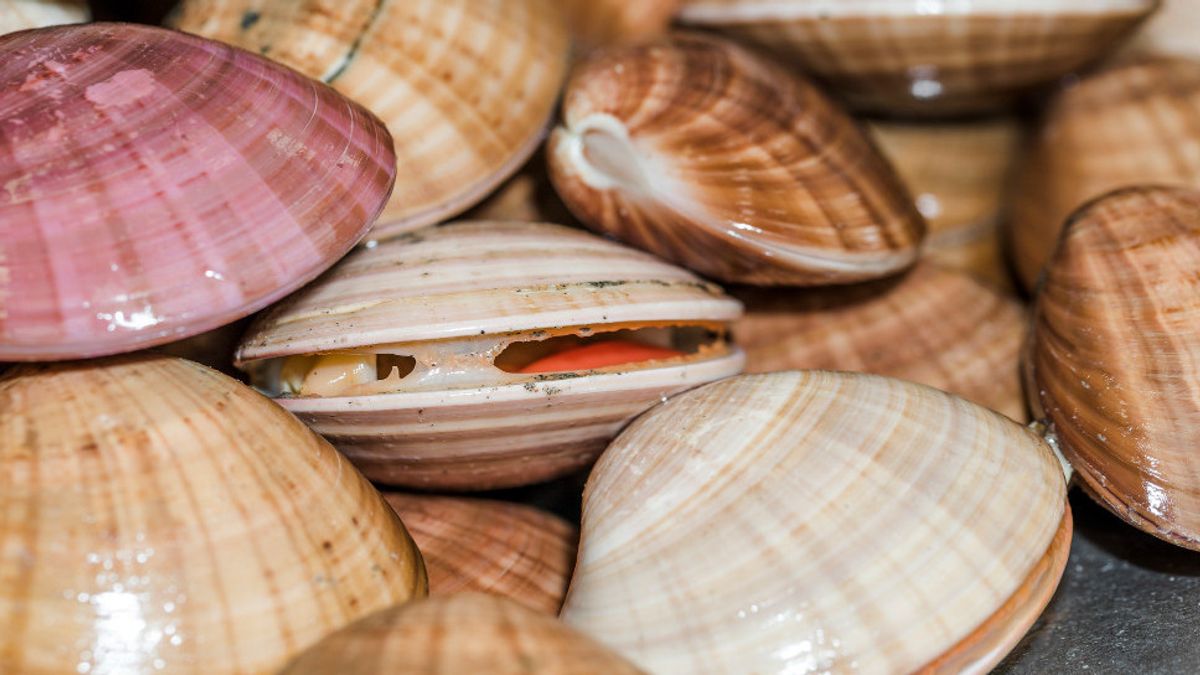YOGYAKARTA - Did you know that not all types of shells are safe for consumption? Although popular as delicious dishes in various places to eat, from luxury restaurants to street food stalls, there are several types of shells that contain harmful toxins to eat. Knowing this type of toxic shell is important to prevent health risks that can arise due to consumption of insecure shells. Then, what types of shells do you need to watch out for?
Shells are one of the favorite choices of seafood because of their delicious taste and distinctive texture. However, behind the delights, there are several types of shells that contain poison or are exposed to harmful substances from their environment. Here are five types of toxic shells that you need to know so you don't choose the wrong one.
Tiramic shells are one of the most popular types of shells, especially when served raw. However, you need to be careful. According to experts, crude tiramic shells can contain the vibrio vulificus bacteria, bacteria that can cause serious infections if they enter the human body. Infections from these bacteria can even be life-threatening, especially if the shells are consumed in large quantities.
Cases of poisoning of crude cucumber shells have often occurred, some of which have even fatal consequences. One example that occurs is the death of a woman in Texas after eating raw cucumber shells that turn out to be contaminated. Therefore, consumption ofement shells needs to be done carefully, and it is best to choose a cooked shell so that the risk of bacterial exposure is reduced.
Blood shells are also included in the list of toxic types of shells that need to be watched out for. Based on the New York Times report, blood shells are included in the list of the 17 most dangerous foods in the world. These shells are often contaminated with dangerous viruses and bacteria, such as hepatitis A virus, typhoid-causing bacteria (Salmonella typhi), and centribal-causing bacteria. If blood shells are consumed raw or undercooked, the risk of contracting diseases such as hepatitis, typhosis, or dysenter is very high.
The high content of pathogens in blood shells makes it very risky for health. Therefore, it is important to ensure that the blood shells consumed come from clean waters and are cooked properly to minimize the risk of disease that can be caused.
Sheath is a type of shell that has the characteristics of a white shell with black fur on its surface. Although generally fur shells are considered safe, it turns out that there are health risks that can arise, depending on the water conditions where they live. In 2016, it was reported that there were about 60 people from Jeneponto Regency, Makassar, who were severely poisoned after consuming fur shells originating from polluted waters. This indicates that fur shells can contain bacteria and hazardous chemicals if they live in unclean waters.
If you want to enjoy the fur shell, it is highly recommended to ensure the origin of the shell comes from clean and unpolluted waters. Consumption of fur shells from polluted waters can be detrimental to health, including the risk of severe poisoning.
Cymping shells or also known ascallop have a beautiful shape and are widely favored because of their high nutritional content, such as protein, as well as low fat and calories. Even so, simping shells can also pose a risk of poisoning if they come from polluted waters. In 2014, four people were reported to have died after consuming a simping shell that was thought to have originated in high levels of pollution.
This case shows that even though the shell is healthy and delicious, its origins must be watched out for. Choose a simping shell taken from safe and clean waters, and make sure the shell is cooked perfectly before being eaten.
Green shells are a type of shell that is widely known and often consumed by the public. However, although it looks safe, green shells can also contain harmful toxins. The toxins in green shells are even said to be more dangerous than cyanide, although the concentration is relatively small. This effect of poison may not be felt immediately, but if green shells are consumed in excessive quantities, the risk of poisoning can increase.
To enjoy green shells safely, avoid large amounts of consumption and make sure these shells are cooked perfectly. In addition, also pay attention to the origin of the shells, because the water quality where the shells live is very influential on the toxic content in them.
Talking about shells, to add more insight, you also need to recognize 5 Sea Foods That Are Hazardous to Body Health
So after knowing the type of toxic shell, look at other interesting news on VOI.ID, it's time to revolutionize news!
The English, Chinese, Japanese, Arabic, and French versions are automatically generated by the AI. So there may still be inaccuracies in translating, please always see Indonesian as our main language. (system supported by DigitalSiber.id)











